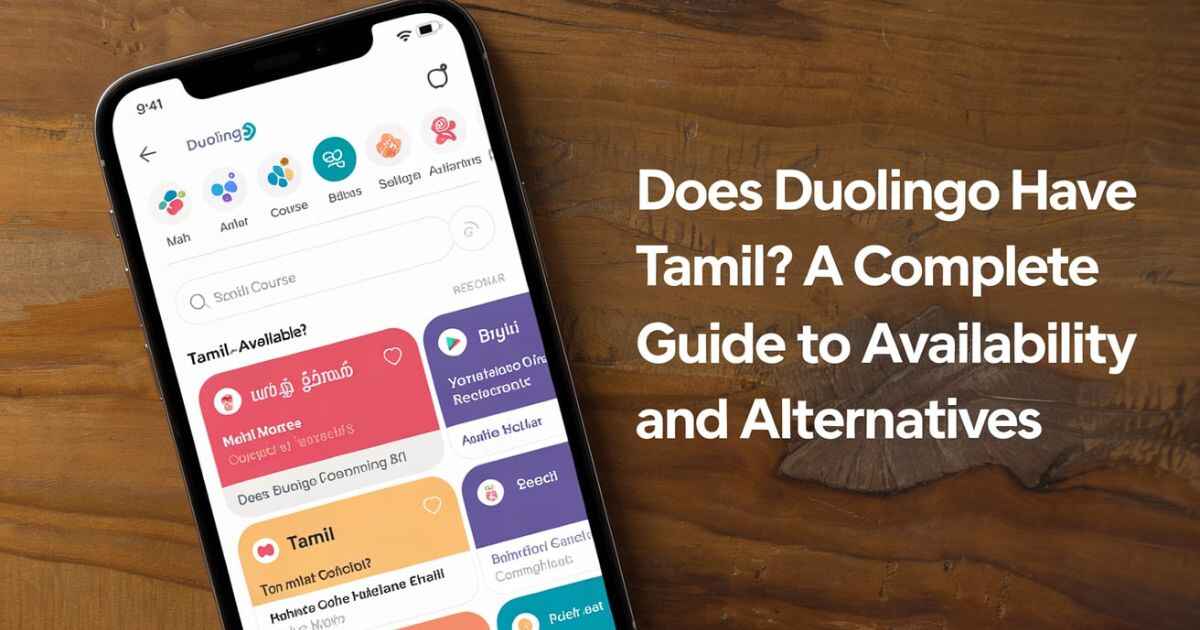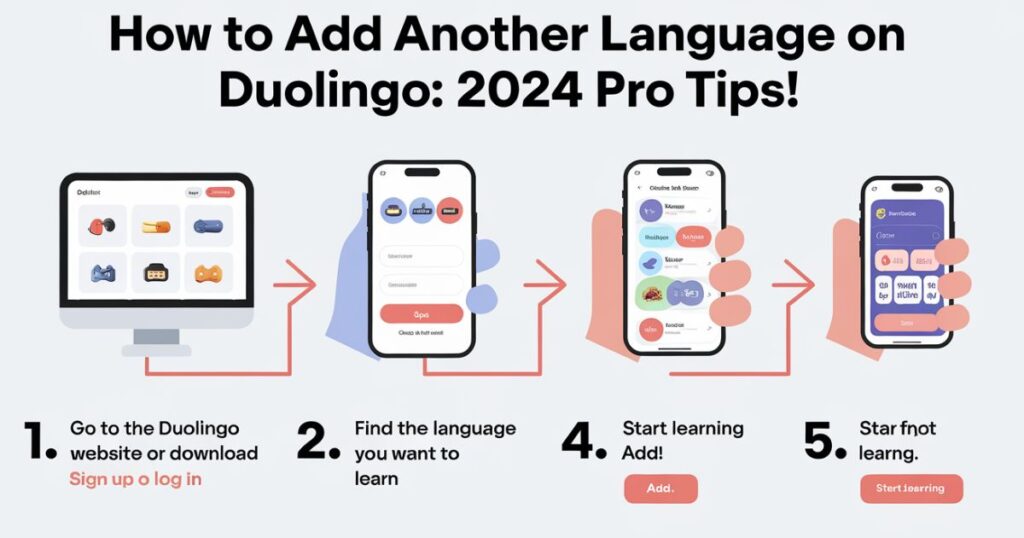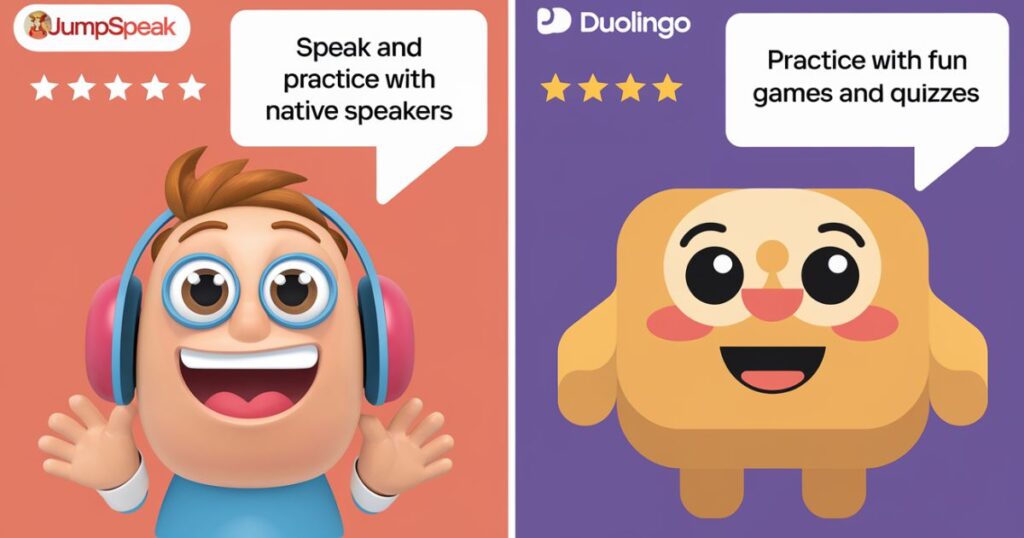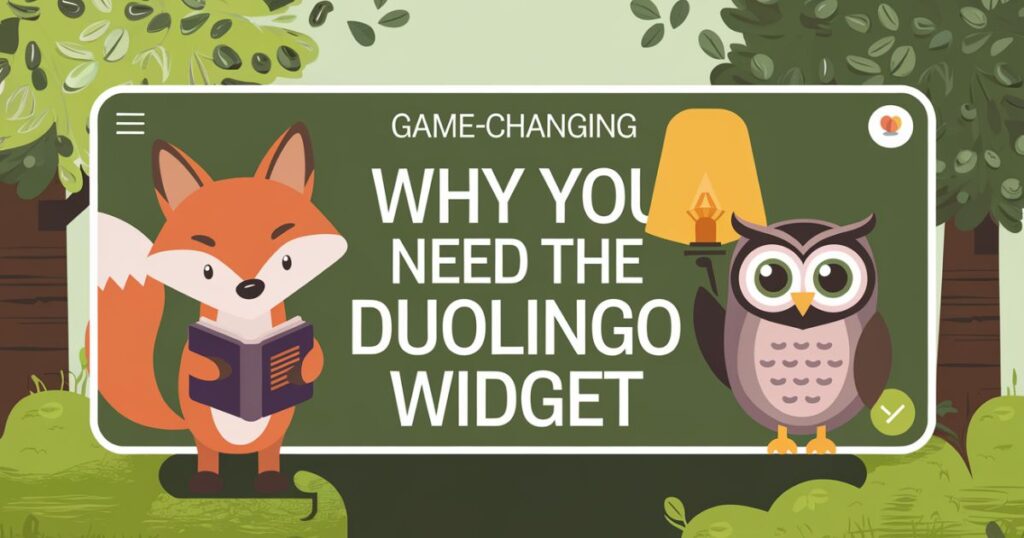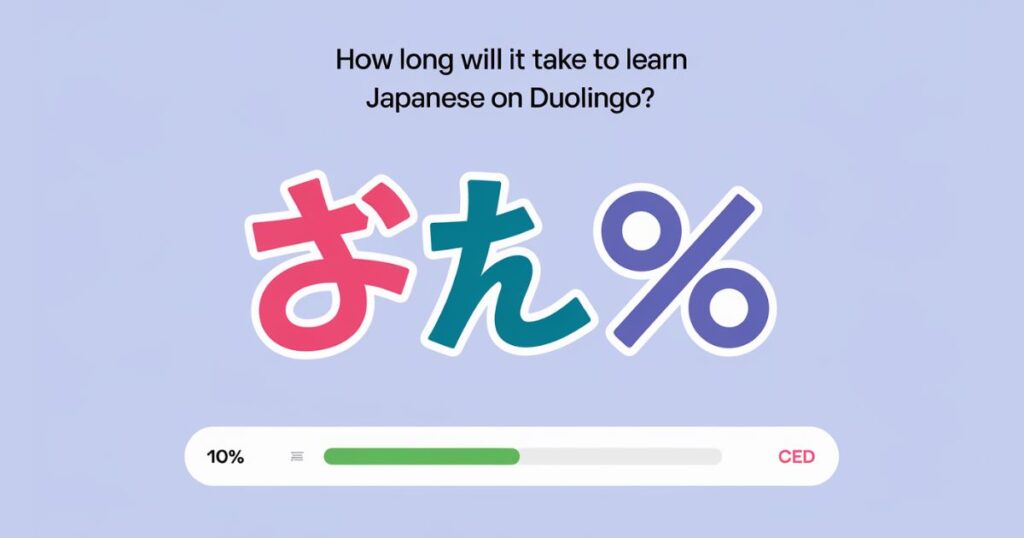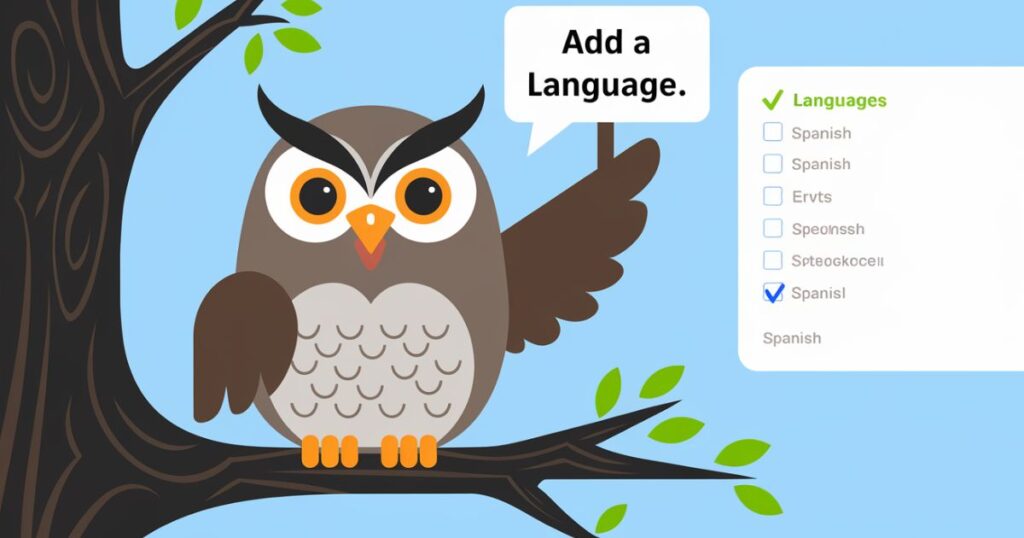Learning Tamil opens doors to one of humanity’s oldest living languages. With over 80 million speakers worldwide, Tamil’s rich cultural heritage spans more than two millennia. This classical language, recognized by the Indian government and UNESCO, holds official status in Tamil Nadu, Sri Lanka, Singapore, and Malaysia.
But can you learn this ancient language on Duolingo, the world’s most popular language learning platform? Let’s dive into the current situation and explore your best options for mastering Tamil.
Current Status of Tamil on Duolingo (2024)
As of early 2024, Tamil isn’t available on Duolingo. While the platform offers several South Asian languages including Hindi, Bengali, and Sanskrit, Tamil remains conspicuously absent. The platform’s strategic expansion has historically focused on languages with large speaker populations and significant global demand. Despite Tamil’s rich heritage and substantial speaker base, several technical and structural challenges have delayed its implementation.
The Duolingo incubator program, which facilitates new language course development, hasn’t yet initiated Tamil course creation. This absence isn’t due to lack of interest – the Tamil-speaking community has consistently advocated for its inclusion. Duolingo acknowledges Tamil’s significance as one of the world’s classical languages, with its literature dating back to the Sangam period (300 BCE to 300 CE).
More Post: Jumpspeak vs Duolingo: The Ultimate Language Learning App Comparison (2024)
The Journey Toward Tamil Integration
Technical Challenges
The integration of Tamil into the Duolingo mobile app presents complex technical hurdles that go beyond simple character display. The Tamil script, derived from the ancient Tamil Brahmi script, requires sophisticated implementation to maintain its integrity and readability across different platforms and devices.
The technical framework must support:
| Feature | Technical Requirement | Implementation Challenge |
| Character Display | Full Unicode support | Rendering 247+ unique characters |
| Text Direction | Left to right writing | Proper character combining |
| Font Rendering | High-resolution display | Maintaining character clarity |
| Input Methods | Multiple keyboard layouts | Supporting various input systems |
| Mobile Optimization | Cross-platform compatibility | Consistent display across devices |
These technical aspects demand significant development resources and extensive testing to ensure a seamless learning experience. The platform must handle Tamil’s complex character combinations while maintaining responsiveness and user-friendly interface across all devices.
Course Development Complexities
The Duolingo course development process for Tamil faces unique challenges due to the language’s structural and cultural elements. Course creators must consider:
The distinction between formal and informal Tamil creates additional complexity in lesson planning. Written Tamil often follows more conservative grammatical rules, while spoken forms vary significantly by region and social context. This diversity requires careful consideration in curriculum development to ensure learners gain practical communication skills while understanding formal language structures.
More Post: Earning More XP on Duolingo: Maximize Your Language Learning in 2024
Linguistic and Cultural Considerations
Written vs. Spoken Tamil Differences
The gap between Spoken Tamil vs Written Tamil presents significant challenges for digital learning platforms. Written Tamil maintains formal structures that differ substantially from everyday speech. This diglossia affects various aspects of language learning:
Modern spoken Tamil has evolved significantly from its classical form, incorporating regional variations and modern expressions. The course must bridge this gap effectively, teaching both traditional forms and contemporary usage. This balance ensures learners can both appreciate classical Tamil literature and engage in everyday conversations.
Cultural Context and Learning Implications
Tamil’s deep cultural roots require careful integration of cultural elements into language lessons. The language carries rich historical and cultural significance that affects:
- Traditional greetings and social interactions
- Religious and philosophical terminology
- Literary references and classical quotations
- Modern cultural expressions and media
Comprehensive Alternative Learning Solutions
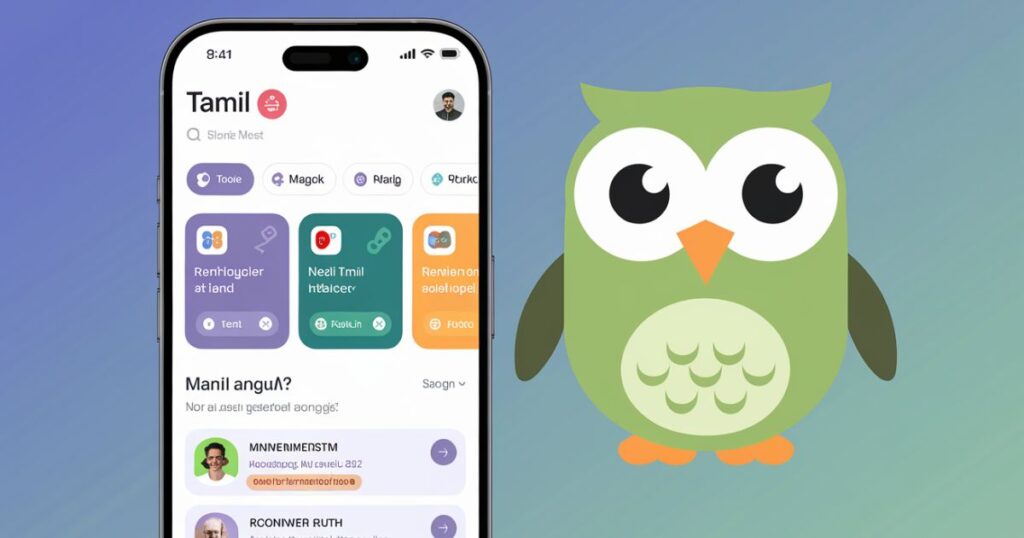
While awaiting Tamil’s potential addition to Duolingo, several robust alternatives offer comprehensive Tamil learning experiences:
Digital Learning Platforms
| Platform | Learning Approach | Key Benefits | Best For |
| Memrise | Spaced repetition | Native audio, cultural notes | Vocabulary building |
| Ling App | Interactive lessons | Writing practice, grammar | Beginners |
| Drops | Visual learning | Quick daily practice | Supplementary learning |
| Mango Languages | Comprehensive courses | Cultural integration | Serious students |
Academic and Professional Resources
Several institutions offer structured Tamil learning programs:
The American Institute of Indian Studies provides intensive Tamil programs combining traditional and modern teaching methods. Universities worldwide, including the University of California, Berkeley and the National University of Singapore, offer comprehensive Tamil courses both online and in-person.
Interactive Learning Communities
Language exchange platforms facilitate real-world practice:
HelloTalk and Tandem connect learners with native Tamil speakers for conversation practice. These platforms offer:
| Feature | Benefit | Learning Impact |
| Text Chat | Practice writing | Immediate feedback |
| Voice Messages | Pronunciation work | Natural speech patterns |
| Video Calls | Real-time conversation | Cultural exchange |
| Community Posts | Cultural learning | Contemporary usage |
Future Prospects and Development
While Duolingo hasn’t announced specific plans for Tamil, several factors suggest positive movement toward its eventual inclusion:
The platform’s recent technical improvements in handling complex scripts, demonstrated through the successful implementation of other South Asian languages, build foundation for Tamil integration. The growing global interest in Tamil, particularly in technology and business sectors, strengthens the case for its addition.
Comprehensive Learning Strategy
Instead of waiting for Duolingo, implement this multi-faceted approach to Tamil learning:
Foundation Building
Begin with structured lessons through established platforms like Memrise or Ling. These provide essential vocabulary and basic grammar understanding. Supplement with pronunciation tutorials from qualified YouTube channels focusing on proper sound formation.
Intermediate Development
Progress to more comprehensive resources including online courses and textbooks. Engage with Tamil media, starting with subtitled content and gradually transitioning to native materials.
Advanced Practice
Join language exchange groups and participate in online Tamil communities. Practice writing through social media interactions with native speakers and engage in cultural discussions.
FAQ’s About Tamil on Duolingo
Does Duolingo have a Tamil language course?
Currently, Duolingo doesn’t offer a Tamil language course. While the platform continues to expand its language offerings, Tamil hasn’t yet been added to their curriculum. However, several other Indian languages like Hindi and Bengali are available.
What is the current status of the Tamil language course on Duolingo?
As of 2024, there’s no active development of a Tamil course on Duolingo’s platform. The language hasn’t entered the incubator phase, which is the first step in Duolingo’s course development process. However, community interest remains strong, and supporters continue to advocate for its addition.
What are the challenges in creating the Tamil course for Duolingo?
Several significant challenges exist in developing a Tamil course:
- The complexity of the Tamil script system with its 247 syllabic characters
- Differences between written and spoken Tamil
- Technical implementation of proper character rendering
- Need for qualified course contributors
- Integration of cultural context into lessons
How does Duolingo’s language course development process work?
Duolingo follows a structured approach to developing new language courses:
- Initial assessment of community demand and feasibility
- Technical evaluation of language implementation
- Recruitment of qualified volunteer contributors
- Course content development and testing
- Beta phase launch and community feedback
- Official course release
What other language learning resources can learners explore while waiting for Tamil on Duolingo?
Several excellent alternatives exist for learning Tamil:
| Platform | Focus Area | Best Features |
| Memrise | Vocabulary | Native speaker videos |
| Ling App | Grammar | Writing practice |
| Drops | Daily practice | Visual learning |
| Hello Talk | Conversation | Language exchange |
Does Duolingo have plans to offer a Tamil language course in the future?
While Duolingo hasn’t made any official announcements about a Tamil course, they continue to expand their South Asian language offerings. The platform acknowledges the significance of Tamil but hasn’t provided a specific timeline for its development.
Who are the contributors working on the Tamil course for Duolingo?
Currently, there isn’t an active contributor team for Tamil on Duolingo, as the course hasn’t entered development. When Duolingo decides to create a Tamil course, they’ll recruit qualified volunteers through their incubator program.
What are the technical challenges in implementing Tamil on Duolingo?
The technical implementation of Tamil faces several hurdles:
- Complex script rendering requirements
- Mobile device compatibility across different platforms
- Proper display of Tamil characters alongside English
- Integration of proper keyboard input methods
What is the timeline for Duolingo’s course creation for South Asian languages?
Duolingo typically takes 12-18 months to develop a new language course. However, complex scripts like Tamil may require additional time. The platform has successfully launched Hindi and Bengali courses, demonstrating their commitment to South Asian languages.
How can learners support the addition of Tamil to Duolingo?
Supporters can:
- Join Duolingo’s community forums and express interest
- Apply to become course contributors when positions open
- Share Tamil learning resources with other learners
- Participate in language learning communities
Can we learn Tamil in Duolingo?
No, Tamil is not currently available on Duolingo. However, learners can use alternative platforms like Memrise, Ling App, or traditional learning resources while waiting for potential future development.
Is there any app to learn Tamil language?
Yes, several quality apps are available for learning Tamil:
- Memrise
- Ling App
- Drops
- Mango Languages
- Learn Tamil Quickly
- Language Curry
What Indian languages are on Duolingo?
Duolingo currently offers:
- Hindi
- Bengali
- Sanskrit (in beta)
What languages will Duolingo add in 2024?
While Duolingo hasn’t officially announced all new languages for 2024, they continue to develop courses through their incubator program. For the most up-to-date information on new language additions, check Duolingo’s official blog and social media channels.
Looking Forward
While Tamil isn’t currently available on Duolingo, the vibrant ecosystem of alternative learning resources provides multiple pathways to Tamil proficiency. The technical and linguistic challenges facing Tamil’s implementation on Duolingo are significant but not insurmountable.
The future of Tamil language learning looks promising, with increasing digital resources and growing global interest. Whether through traditional methods or modern platforms, dedicated learners can achieve proficiency through consistent practice and immersion in Tamil culture and community.
Remember that language learning is a gradual process requiring patience and dedication. The absence of Tamil on Duolingo shouldn’t deter you from beginning your learning journey. The rich variety of available resources, combined with the support of the global Tamil-speaking community, provides everything needed for successful language acquisition.

Welcome to DuolingoAbout.com! Your go-to hub for expert tips, tricks, and guides to mastering Duolingo. Simplify your language-learning journey with curated content designed for learners at all levels.
